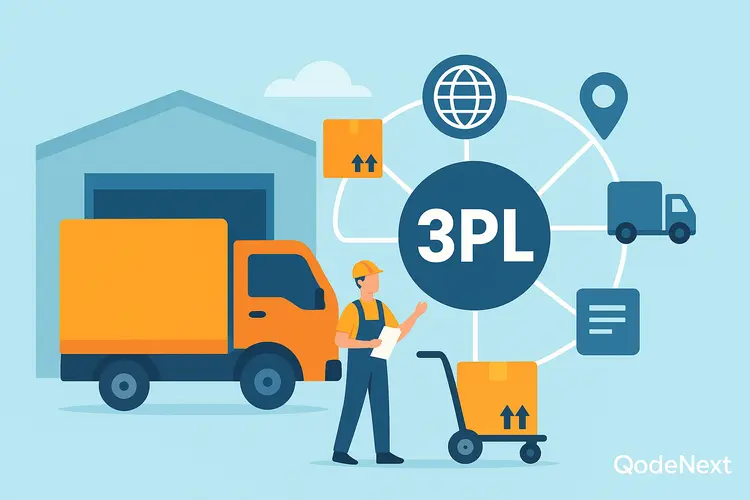Ensuring Employee Safety and Smooth Operations – The Importance of Warehouse Safety Inspection The emergence of new technologies has led to the evolution of automation, which is essential for improving safety inspections, minimizing risk, and guaranteeing compliance with safety procedures.
This blog discusses the advantages of automation in warehouse safety inspections, essential aspects of a warehouse safety inspection checklist, and how automated systems enhance overall warehouse logistics.
Why Warehouse Safety Inspection Is Necessary?
Warehouses are fast-paced locations, sometimes automated, with heavy machinery, high shelving, and lots of goods-in-motion. Performing a comprehensive warehouse safety inspection is essential to comply with occupational safety standards, reduce accidents, and facilitate productivity.
Warehouse injuries are among the most common in the workplace, usually involving forklift accidents, falls, or improper storage of goods, according to the National Safety Council. This has reclassified routine checks as not only a legal obligation but also as a moral duty for employers. Conventional safety inspections are effective but time-consuming and subject to human error. Enter automation, providing more accurate, efficient, and scalable solutions for preventative safety in the modern world.

Warehouse Safety Inspection: 5 Ways Automation Can Improve It
Such automation provides a radical transformation of the safety inspection gate by bringing technological systems into critical areas of operation. Now, let’s explore how automation improves safety procedures and reduces risk in warehousing situations.
1. Unlocking Automation Through Safety Checklists
In large warehouses, manual inspection of safety parameters can lead to oversight. Automated systems allow for strong and round-the-clock safety checks. For instance, an automated warehousing safety inspection checklist can be fed into the automated devices to check each safety parameter with no possibility of skipping any. Automation makes sure nothing gets overlooked – from fire exits to equipment maintenance.
By implementing automation, these checklists can even send real-time updates and reminders to ensure every task is being completed on time. For example, automated systems can alert managers when safety equipment, such as fire extinguishers or alarms, needs service.
Example: An integrated cloud-based safety checklist with the warehouse management software alerts the supervisors regarding any past-due equipment inspections or compliance updates. This minimizes the risk of hazards due to negligence.
2. Automated Sensors for Real-Time Data
IoT automated sensors are an essential element of modern warehouses because they aid in monitoring the most important areas in real time. These sensors can monitor temperature changes, spills, structural abnormalities, or even breaches in security. Such data provides warehouse managers with the ability to take proactive measures to improve safety risks as opposed to reactive measures which can only occur after an accident or incident has occurred.
During a warehouse racking inspection, for example, sensors can analyze load distribution and identify signs of wear or structural failure. Automated systems can even shut down operations in hazardous areas until any issues have been resolved, greatly minimizing the risk of a potential accident.
3. Predictive Maintenance through AI-Driven
Predictive Maintenance is one of the most influential uses of Automation in Warehouse Safety Inspection. AI systems scour data from sensors on the equipment to detect possible breakdowns before they happen. Not only does this extend the life of machinery, but it also aids in preventing accidents due to sudden breakdowns.
For instance, a sensor-equipped forklift would send its performance data to an AI system that detects wear indicators or signs of impending failure. Maintenance teams can then act on these findings before the equipment becomes a threat to safety.
4. Increased Inspections of Warehouse Rack Systems
The importance of regular warehouse racking systems are one of the most crucial elements in the management of storage, but in some cases, if not properly serviced they can present a serious issue from a safety perspective. The key to preventing collapses or injuries is regular inspections. Automation streamlines this process using drones, robots, and AI-powered cameras.
These technologies perform visual inspections of the racking systems for damages or misalignments. Automated inspections can be performed faster, more accurately, and safer than an individual physically going through checks, especially in larger warehouses with higher shelving units.
Automated systems can also save and analyze inspection data over time, enabling managers to realize and establish patterns and implement long-term change. This not only increases safety but also increases the durability of the rack systems.
5. Integrated for automated warehouse logistics
Automated warehouse logistics are not limited to inventory management; they are essential for safety inspections as well. For instance, AGVs and robotic forklifts use multiple sensors and cameras that monitor their surroundings, avoid collisions, and keep within designated safety zones.
This allows for the integration of both automated logistics and safety inspections to create a connected ecosystem in a warehouse where equipment, employees, and safety processes work in harmony. More importantly, this integrates safety standards with operational efficiency optimization.
For example, automated guided vehicles employ advanced navigation systems that will prevent them from doing any harm, and data from their operations can be streamed into safety inspection documentation, providing a complete picture of warehouse safety.
How to Create a Safety Inspection Checklist for Warehouses
The warehouse safety inspection checklist is an important safeguarding tool. Automating the checklist (to the extent possible) is a given, but the checklist itself must ensure that all critical areas are addressed. Here are key parts to incorporate:
- General Safety: Maintain adequate lighting, clutter-free pathways, and easily readable signs.
- Equipment Inspection: Check forklifts, conveyors, automated systems, and more.
- Racking System: Examine the shelves for structural soundness, proper load distribution, and compliance with the weight capacity limit.
- Emergency systems: Test fire alarms, sprinklers, emergency shutoff systems, and first-aid stations.
Now warehouses can comply and also tackle safety concerns with this checklist, as you can automate the execution and monitoring of this checklist. Moreover, automated systems can generate precise reports for audits and compliance reviews.
How Automated Storage Systems Impact Warehouses
Faster, More Efficient Warehousing – Automated systems let warehouses store, retrieve, and manage goods more quickly, more efficiently. It uses robotics, AI, and state-of-the-art sensors to maximize space and improve safety.
For instance, because automated vertical lift modules (VLMs) do not require employees to physically pick up heavy goods, employees experience fewer injuries. These systems include safety interlocks, weight sensors, and emergency-stop mechanisms to avoid accidents.
Automation guarantees that items are stored and recovered in a fashion that supports security and utility. These systems can also be linked with warehouse management systems to track the inventory on a real-time basis, helping operational control even better.
Frequently asked questions
Why is a warehouse safety inspection important?
Essentially, warehouse safety inspections are meant to keep employees, equipment, and goods safe by identifying potential dangers and making sure that facilities comply with safety rules and regulations.
How is automation enhancing the safety inspection process within warehouses?
Automation enhances reliability, minimizes human errors, and offers real-time information on improving the effectiveness of safety inspections.
What’s Included in a Warehouse Safety Inspection Checklist?
General Safety, Equipment Checks, Racking Inspections, Emergency Systems, and Employee Training are all the sections that a warehouse safety inspection checklist must cover.
What are safety improvements in warehouses with automated storage systems?
Automated storage systems minimize manual handling of goods, which lowers the risk of accidents and enhances inventory management efficiency.
Why is warehouse racking inspection important?
Conducting warehouse racking inspections is critical to prevent devastating structural failures and to keep your employees and goods stored on high shelves safe.
Conclusion
The safety inspection of the warehouse is very important for a secure working environment where efficiency is the aim of the Warehouse Safety Inspection. Automation has transformed the inspection process, providing precision, uniformity, and immediate visibility. Automating safety checklists, predictive maintenance, and even complex racking inspections are reducing risks and improving efficiency in operations.
Are you prepared to change your warehouse safety procedures? Explore QodeNext which covers all aspects of safety checks and compliance. Have a look at state-of-the-art solutions today!







